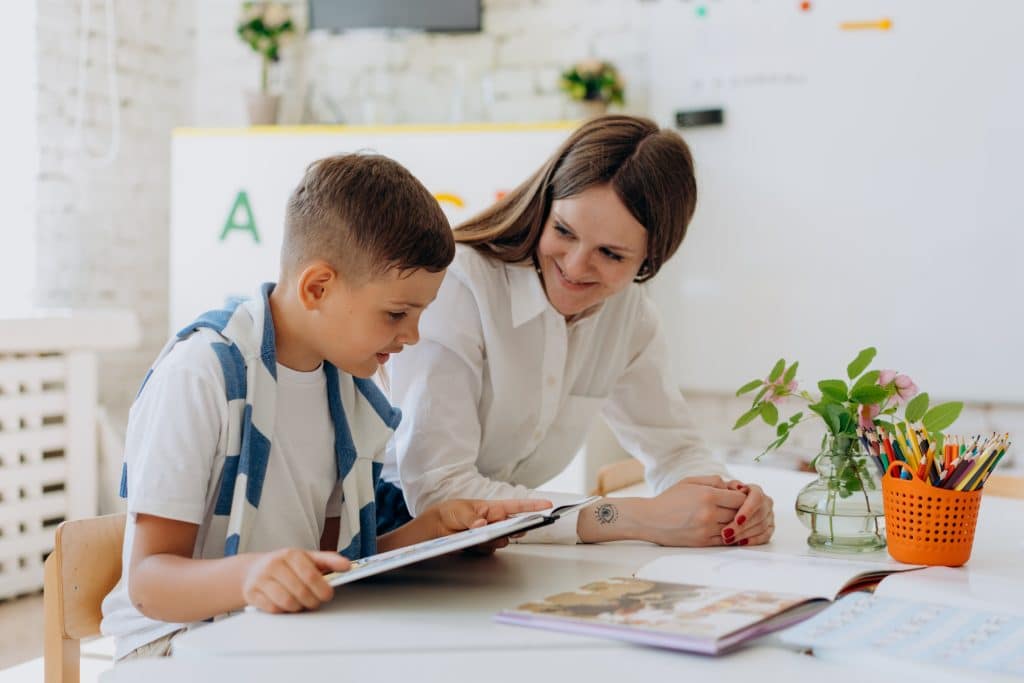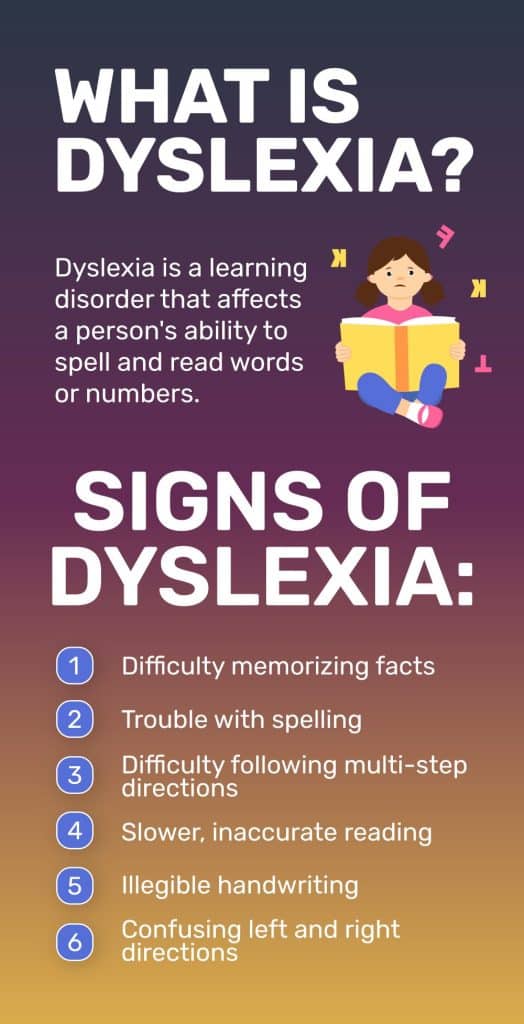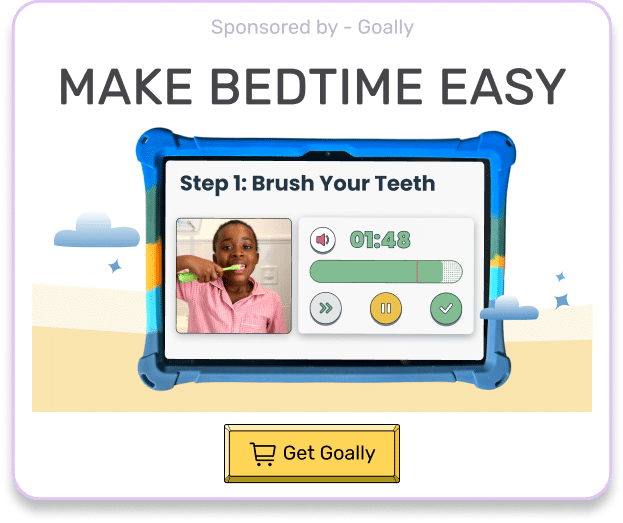Cracking the code of dyslexia can feel like trying to solve a tricky puzzle. But have no fear, parents! We’re here to help you navigate through how dyslexia is diagnosed and provide you with helpful insights into this often misunderstood learning difference. Together, we’ll explore what dyslexia is, how it’s diagnosed, and ways to support your child on their unique journey.
Table of Contents
“Which language games will help my kid the fastest?” 👇
Goally’s tablet has some of the top language learning games & apps that help kids learn their first 50 words, practice finger dexterity & fine motor skills, AND communicate with AAC.
What Is Dyslexia? Breaking It Down for Parents
Dyslexia is a brain-based condition that affects reading, writing, and spelling abilities in children. It’s important to remember that kids with dyslexia are just as intelligent as their peers; they simply process information differently. Finding out if your child has dyslexia early on can make all the difference in helping them succeed at school and in life.
Researchers haven’t pinpointed an exact cause yet, but they believe dyslexia is related to differences in how the brain processes language. This means that children with dyslexia may struggle more with tasks involving reading or writing but excel in other areas like creativity or problem-solving.
Signs That Your Child Might Have Dyslexia
Even though every child develops at their own speed, there are some common signs that may suggest your child could be struggling with dyslexia:
- Difficulty recognizing letters or connecting them with sounds
- Trouble blending sounds into words
- Slow or choppy reading
- Spelling mistakes
- Problems remembering sequences (like days of the week)
If you notice any of these signs in your child, it might be time to look deeper.

Read more: Dyslexia Test for Kids
It’s essential not only to watch for these signs but also to communicate openly with teachers about your concerns. They can provide valuable insights into your child’s performance in the classroom and may have additional resources to help you better understand dyslexia.
How Is Dyslexia Diagnosed? A Step-by-Step Guide for Parents
Figuring out how dyslexia is diagnosed involves several steps – from watching for early warning signs to getting professional evaluations. Here’s a step-by-step guide on what you can expect during this journey:
- Trust Your Instincts – If something feels off about your child’s learning progress, don’t hesitate to speak up.
- Talk With Teachers – Share any observations or concerns with your child’s teacher(s) who may have noticed similar patterns.
- Get Professional Help – Consult an educational psychologist or specialist who can conduct a complete evaluation.
- Embrace the Diagnosis – If your child is diagnosed with dyslexia, remember that early help and support are key to their success.
During the evaluation process, professionals will use various tools and methods to assess your child’s abilities and challenges:
- Interviews with parents and teachers
- Observations of the child in different settings (like school, home)
- Standardized tests checking reading, writing, and spelling skills
- Cognitive assessments measuring memory, processing speed, and other related abilities
These evaluations help create a full picture of your child’s strengths and challenges.
Finding Solutions That Work
Once you’ve learned how dyslexia is diagnosed, it’s time to find effective solutions tailored to your child’s unique needs. Here are some popular approaches:
- Structured Literacy Programs – These programs focus on teaching children how sounds match up with letters using phonics-based instruction.
- Multisensory Techniques – Using multiple senses (seeing, hearing, touching) helps make learning concepts stick.
- Assistive Technology – Tools like text-to-speech software or audiobooks can make reading easier for children with dyslexia.
Keep in mind that what works best for one child may not be perfect for another; finding the right fit takes patience and persistence. It’s also essential to maintain open communication with your child’s teachers and support team, as they can provide valuable feedback on which strategies are most effective in the classroom.

Be Your Neurodivergent Child’s Champion
As a parent of a neurodivergent child with thinking and learning differences like dyslexia, it’s important to stand up for them at school and beyond:
- Stay Informed – Keep learning about new research on dyslexia solutions so you can make smart choices about your child’s education.
- Work With Educators – Team up with teachers to create an Individualized Education Plan (IEP) or 504 plan designed just for your child’s needs.
- Build a Support Network – Connect with other parents of children with dyslexia and share experiences, resources, and encouragement.
By advocating for your child’s unique needs and working closely with their support team, you can help ensure that they receive the tools and resources necessary for success in school and beyond.
The Bright Side: Celebrating Dyslexic Strengths
While dyslexia presents challenges, it’s essential to recognize the unique strengths that often come with this learning difference:
- Creativity
- Problem-solving skills
- Empathy
- Big-picture thinking
By focusing on these strengths and providing the right support, your child can shine in their own amazing way.
Dyslexic Strengths & Famous Examples
| Strength | Famous Person | Occupation |
|---|---|---|
| Creativity | Steven Spielberg | Film Director |
| Problem-solving | Richard Branson | Entrepreneur |
| Empathy | Octavia Spencer | Actress |
| Big-picture | Sir Winston Churchill | Prime Minister |
Closing: Decoding Success Together
Now that you’ve unlocked the mystery of how dyslexia is diagnosed, you’re ready to help your child succeed. With early intervention, tailored support strategies, and a focus on their unique strengths, your neurodivergent child can reach their full potential. So go forth and decode the world together!
This post was originally published on 04/17/2023. It was updated on 06/27/2023.

Goally
We help parents teach their kids life skills, like doing bedtime and morning independently. Backed by science, we incorporate evidence-based practices and expert-informed designs in all of our apps and content.







